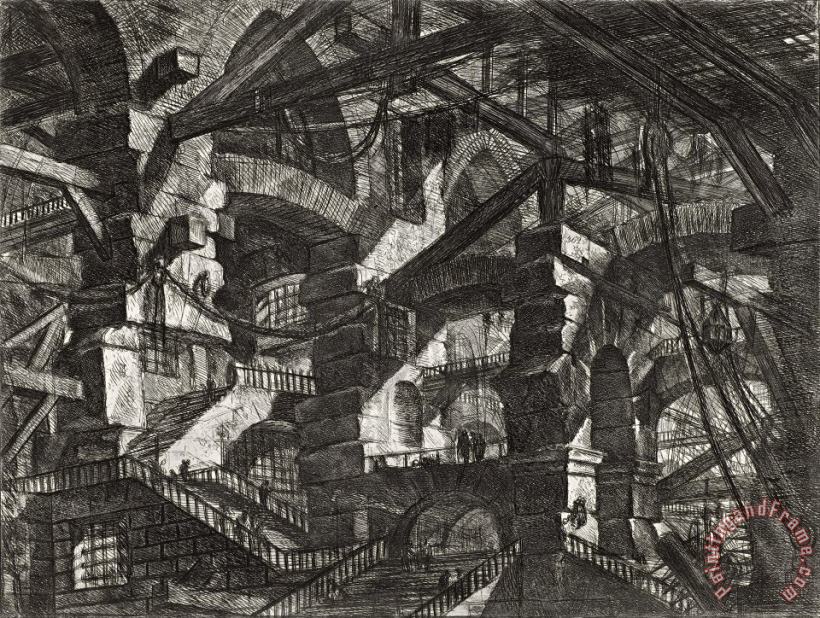
With a low viewpoint and small, fragile figures, the prison scenes become monstrous megacities of incarceration, celebrated to this day as masterworks of existentialist drama. His startling, chiaroscuro images imbued the city’s archaeological ruins with drama and romance and became favorite souvenirs for the Grand Tourists who traveled Italy in pursuit of classical culture and education. Staircases exist on two planes simultaneously vast, vaulted ceilings seem to soar up to the heavens interior and exterior distinctions collapse. The most famous 18th-century copper engraver, Giovanni Battista Piranesi (17201778) made his name with etchings of ancient Rome. Trained as an architect in his native Venice, Giovanni Battista Piranesi went. Loosely based on contemporary stage sets rather than the actual dingy dungeons of Piranesi’s day, these intricate images defy architectural reality to play instead with perspective, lighting, and scale. two large etchings on paper showing ancient columns carved in light relief. It was during this period that he developed his highly original etching.

#Piranesi the etchings series#
Today, Piranesi is renowned not just for shaping the European imagination of Rome, but also for his elaborate series of fanciful prisons, Carceri, which have influenced generations of creatives since, from the Surrealists to Samuel Taylor Coleridge, Edgar Allan Poe, Jorge Luis Borges, and Franz Kafka. He studied with leading printmakers of the day and settled permanently in Rome in 1745.


These etchings were destined to influence countless scenic designers in preparing their sets of dungeons and torture chambers.The most famous 18th-century copper engraver, Giovanni Battista Piranesi (1720–1778) made his name with etchings of ancient Rome. Sometimes called Rembrandt of the ruins, Piranesi created etchings that employed dramatic angles and bold lighting effects to imbue crumbling structures with vitality and romance. Ted Chiang for length (well, and quantity honestly). Artist, designer, architect and theorist Giovanni Battista Piranesi (1720-1778) was fascinated by the ancient architecture of Rome. Bibliographic references: Wilton-Ely 1994 / Giovanni Battista Piranesi, the complete etchings (36). I think Beagle is hugely under-read by most contemporary fantasy readers. For comment on the edition and issue, see -16. They may be seen in two states: the first more freely drawn and lightly etched, the final one (to which this illustration belongs) reworked with deep, dark lines and more ominous interiors. My copy of The Last Unicorn is only 212 pages, and every word of it is golden. They were reissued about sixteen years later. Piranesi was twenty-two when he composed his sixteen fantasies. De Quincey never saw Piranesi's plates, but obviously was very moved by the verbal description of them given by his friend, the poet and essayist Coleridge. A famous description comes from De Quincey's Confessions of an English Opium-Eater. A B vue des restes interieurs d'un des pronaos du temple de. Piranesi Album of engravings.jpg 1,520 × 1,516 414 KB. (previous page) ( next page) 'Egyptian Obelisk' from 'Views of Rome' by Giovanni Battista Piranesi, etching, Honolulu Museum of Art.JPG 2,336 × 3,135 908 KB.

It is believed that during his residence in Venice he also knew and studied the etchings of Tiepolo.Ĭertainly Piranesi's most often discussed prints are in his etched Prison series, the Carceri d'Innenzione. The following 200 files are in this category, out of 528 total. From Giuseppe Vasi he had learned etching and engraving, and most of his plates are a mixture of these two techniques. In 1831 Francesco Piranesi did, however, publish an account of his father's career, part of which reads: "In an age of frivolities, he boldly and singlehanded dared to strike out for himself on a new road to fame: and in dedicating his talent to the recording and illustrating from ancient writers the records of former times, he met with a success as great as it deserved, combining, as he did, all that was beautiful in art with all that was interesting in the remains of antiquity."īorn in Venice, Piranesi yearned for Rome, and there he lived and worked most of his lifetime, dedicating himself to studying, measuring, and drawing its architectural treasures. Twstalker, Search twitter profiles and analyze trending topic hashtags. His two sons knew this manuscript and, with additions based on their recollections, prepared their own version, which was submitted to an English publisher. Fan account of Giovanni Battista Piranesi, an Italian artist famous for his etchings of Rome and of fictitious and atmospheric.
#Piranesi the etchings full#
Giovanni Battista Piranesi not only produced an incredible number of etchings and engravings, but is known to have written an autobiography which was reputedly as full of swashbuckling incidents as that of Benvenuto Cellini.


 0 kommentar(er)
0 kommentar(er)
